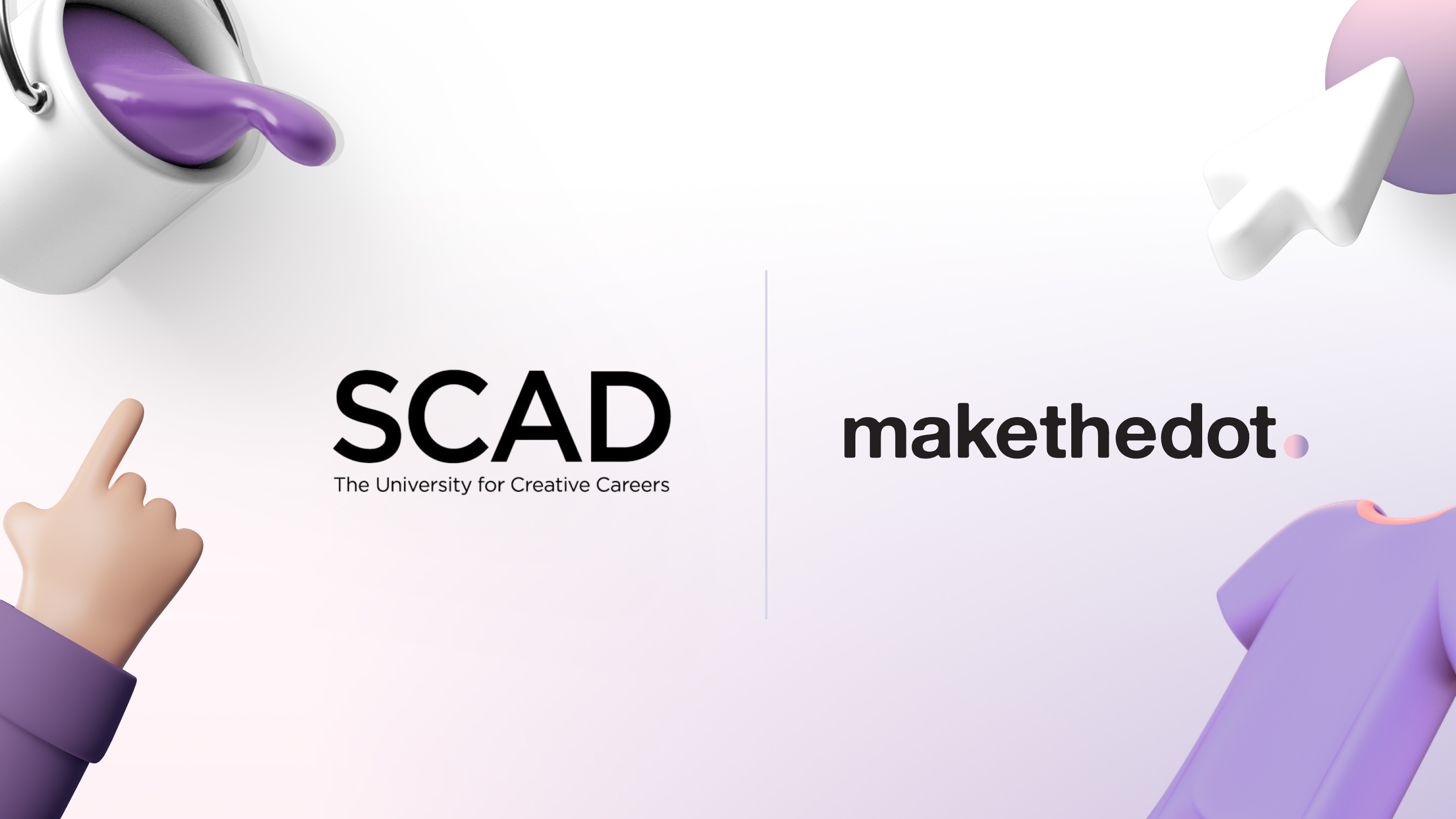Pratt's fabric-focused online and offline concept development process steamlined with Make the Dot
Pratt Institute, located in Brooklyn, New York, is one of the best fashion schools in the world, with a fashion design program focused on learning the materials and craft behind fashion design.
This particular focus on fabrics and materials sets it apart from our fashion schools in the world, and enables their student's to become experts in these areas.

The Problem
An online and offline workflow focused on fabrics and research was hindered by generic fragmented design tools
The final project for the junior students in the Fashion Design BFA required them to create a physical fashion sample that tied together various themes and research collected over the year.
In this respect, having a visual research library to efficiently collect and organize research and refer back to when sewing is critical to success.
Unfortunately, the current workflow and design tools used showed it's limitations.
The first problem arose from the students' inherent online and offline workflow, which was research-heavy and focused on fabrics.
The students used a generic mood boarding platform, detached from actual fabric sourcing, primary offline research, and secondary online research.
The result of this was repeated tasks, making the workflow longer.

For example, the students would screenshot secondary research from Pinterest and upload these images to their moodboarding platform.
They would also refer to physical swatches from fabric stores and photos of primary research on their phones, which were isolated from the rest of their research stored within the moodboard platform.
The result was an incomplete view of their concept direction and all its elements during their creative process.
These issues in the workflow stemmed from the insufficiency of the current generic visual research and moodboarding tools they used.
Because they are generic, these tools are not designed for a fashion designer's workflow and lack the key features and critical elements required to complete their project.
The most significant area missing for the students was the link to real-life fabrics, the most essential part of their workflow.
No matter how early in their workflow, the students would have to buy physical swatches to visualize and experiment with the fabrics in their collection, leading to unnecessary expenses, increased time in the workflow, and wastage.
Moreover, the students found these generic design tools to be laggy due to the many pieces of content they captured digitally, and they found it challenging to frame and visualize their concepts.
Solution
A digital research canvas, with a fabric library linked to actual fabric stores created just for fashion designers

Using Make the Dot has helped to solve the problems in their fragmented workflow.
The first benefit was Make Dot's digital fabric library, which is linked to the real-life fabric stores the students actually source from, such as Mood Fabrics.
The students could additionally digitize and store various real-life fabric swatches they'd collected over the years, allowing them to create their own personal digital fabric library.
This enables them to put all their fabrics, research, and concepts in one place for the first time.
Improving both workflow organization, as well as the visualization of their entire concept.
Furthermore, Make Dot's link to actual fabric stores allowed the students to experiment with fabric visualization earlier in the workflow, saving time and money while reducing wastage.
Next, the students reported that Make the Dot's easy-to-use nature and improved visualization aided the development of their creative concepts.
In particular, they could quickly add primary images directly from their camera roll and secondary research from across the web directly to their board using the browser extension.
.jpg)
A far cry from downloading and re-uploading images from Pinterest.
Make the Dot could also be combined with other design tools used for different jobs, such as Procreate, to create a smooth and seamless workflow.
All of which led to greater workflow efficiency, less busy work, and greater visualization of their entire concept development process
Last but not least, an often overlooked element, Make the Dot, was able to handle large images smoothly and efficiently, an improvement on their previous generic tool, which usually lagged in performing the same task.

The Result
A seamless online and offline workflow savings students time and money in during concept development
Overall, the students reported saving an average of 3 hours per week by no longer needing to switch between tools during concept development.
This productivity and time gain allowed them to experiment with concepts and fabrics, which they reported played a part in improving the final output.

Next, the students reported actual cost savings by eliminating the need to buy multiple fabrics that would often go unused.
Finally, Make the Dot enabled them to create a digital research library for all their fabrics, inspiration, and sketches, which they could refer back to while sewing their physical garments.
This was a significant improvement over the fragmented process of managing elements in their concept development and mood boards before using Make the Dot.
In summary, by using Make the Dot's fashion design-focused platform, Pratt students saved money and time while improving their final projects.
.jpg)



